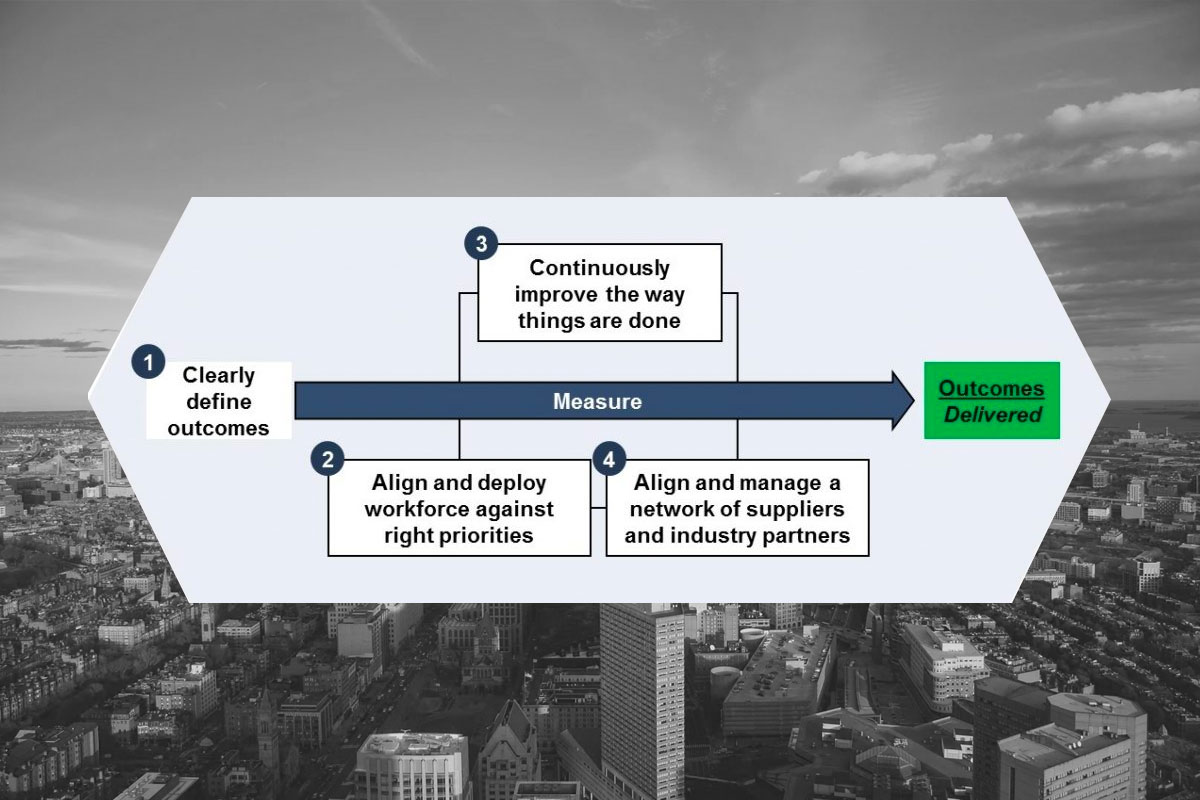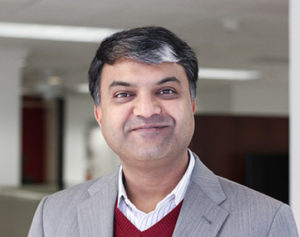“The pressure is mounting on public sector leaders to do more with less.”
Ineffective and inefficient government operations cost taxpayers billions of dollars every year and result in unmet citizen needs. With an increased focus on spending and budgets, public sector leaders are facing significant pressure to reduce inefficiency and improve mission delivery effectiveness. This is easier said than done, especially in uncertain environments where executives have to navigate evolving mission requirements and other disruptions while also trying to reform their organizations. But there is a way…
Operational excellence is the answer.
To continuously drive delivery improvements while reducing costs, public sector leaders will need to look beyond the usual annual actions (across-the-board cost cutting initiatives, hiring freezes, staff buyouts, etc.) and ensure that core prerequisites are in place to drive sustained operational excellence.
Don’t wait for a grand transformational plan. Achieving sustained operational excellence is often portrayed as a daunting task, requiring the optimization and careful orchestration of multiple moving parts from strategy to policies to workforce to processes and systems to suppliers and partners. It is not surprising that many executives flounder and get mired in “analysis paralysis” as they seek the perfect transformational strategy to drive operational excellence through their organizations.
Start small and start today. In practice, operational excellence requires more than a grand vision and strategy – it requires mastery of execution and how to make change happen. The best way to get teams and organizations learn this is by doing – starting small and moving fast on a series of improvements is the best way to begin. As a first step, leaders should take stock of their organizations to diagnose where they are most exposed and prioritize a few quick wins to build momentum and lay the groundwork for longer-term change.
Four actions you should take.
In our experience, leaders who have successfully hard-wired a culture of operational excellence within their organizations do four things really well – see the figure below
Here is our view on how you can get started with each – we will delve deeper in upcoming posts:
Clearly define and measure the outcomes that you want to achieve
Most organizations do not have clear definition of their desired outcomes, and most complex programs suffer from fuzzy goals that are neither sharply defined nor aligned across the organization, resulting in poorly thought through plans that are inherently difficult to monitor and inevitably veer off track.
As a first step, sit down with your team to define the mission, efficiency and effectiveness goals for your organization – even if these are clear in your mind, it always helps to reinforce the outcomes, and how to measure them, with your teams. Next, look across the organization to assess how well the array of programs and activities directly supports these outcomes. You can now start prioritizing operational improvements (e.g., eliminating activities not aligned with mission outcomes), while also building the case for change.
Align and deploy the workforce against the right set of priorities
The workforce is the greatest asset that a leader has. Unfortunately, public sector leaders are often encumbered by resources and programs accumulated over time, which are often not aligned against the right priorities, not organized efficiently, and do not possess the right skillsets to execute ever-evolving missions. Building an organization that unlocks operational excellence goes beyond redrawing boxes and lines on an org chart – it encompasses focusing the workforce against a clear and compelling vision, delineating clear roles and responsibilities and aligning people with the right skills against the right activities.
As a first step, begin by asking your teams a simple question – do they know what their priorities are and how these priorities link back to the outcomes you want to achieve? Cascade this exercise down through the organization, and then have a frank discussion around how each team’s or individual’s specific actions contribute to or detract from the outcomes. This will provide a solid fact base for any organizational changes you consider to improve operational efficiency and effectiveness. More importantly, by forcing staff to consciously “connect the dots” between their priorities and overall organizational outcomes, you will likely find a groundswell of operational improvement ideas percolating up from the grassroots levels.
Actively and continuously improve the way things are done to drive efficiency and effectiveness
Achieving sustained operational efficiency requires eliminating waste and duplicative work not aligned with the strategy and mission priorities, streamlining activities / processes / systems, and better utilizing data to make smarter operational decisions. This requires an optimization of policies that dictate what work is done, the people, processes and systems to execute the work, and management mechanisms to drive continuous improvement. While this can be a complex change management challenge, there are often plenty of quick wins to be had – if one knows where to look.
As a first step, push your teams to “peel back the onion” to find improvement opportunities at a granular enough and actionable level – by de-averaging operating costs (Administrative, IT, Facilities, etc.) and identifying the true (and often hidden) cost drivers. By mapping these cost drivers to specific mission outcomes enabled, you can start eliminating cost line items that are not mission-critical, and reduce / optimize the remaining costs.
Strategically align and manage a network of suppliers and industry partners to enable outcomes
Today, more than ever, public sector leaders must foster effective partnerships between their organizations and suppliers in order to achieve mission outcomes. The right industry partners can bring needed capabilities, innovation, and efficiency. But the reality is that there is billions in waste from Acquisitions resulting from ineffective processes to select the right suppliers and poor performance management to ensure that they are delivering value.
As a first step, assess the extent of alignment between mission / program and Acquisition teams on business needs and requirements. The best way to avoid waste is to buy right in the first place, and this is only possible if business and Acquisition teams are on the same page regarding the outcomes to be enabled by industry partners and the capabilities needed from them, the cost / benefit tradeoffs across providers and contract structures, and effective performance management mechanisms that incentivize firms to collaborate.
Now is the time to act.
Public sector leaders are confronted with an unprecedented opportunity to drive operational excellence within their organizations. Most agencies have already drafted reform plans in response to OMB’s Memo 17-22, “Comprehensive Plan for Reforming the Federal Government and Reducing the Federal Civilian Workforce.” Now comes the hard work of actually delivering on these reforms and ensuring that the anticipated benefits are realized and sustained over time. The actions and first steps outlined above provide a starting point for this journey.
How Censeo can help
Censeo Consulting Group is a strategy and operations consulting firm that, for the past 15 years, has been the premier source of operational excellence expertise for public sector and mission-driven organizations (and bureaus / offices and programs within them), helping them run their operations more effectively and efficiently, delivering better outcomes and lowering costs. We have used our proven approach for implementing the above actions across hundreds of engagements with dozens of clients, including nearly every Federal government agency. To date, we have consistently delivered 5-15X ROI to our clients across our operational improvement projects. Our seasoned team of experts can help you cut costs and improve outcomes regardless of where you are today.
To learn more about how Censeo Consulting can help you with your operational improvement needs, contact us today at info@censeoconsulting.com or by phone at 202. 296.0601
Let Our Team of Experts Help you Today





